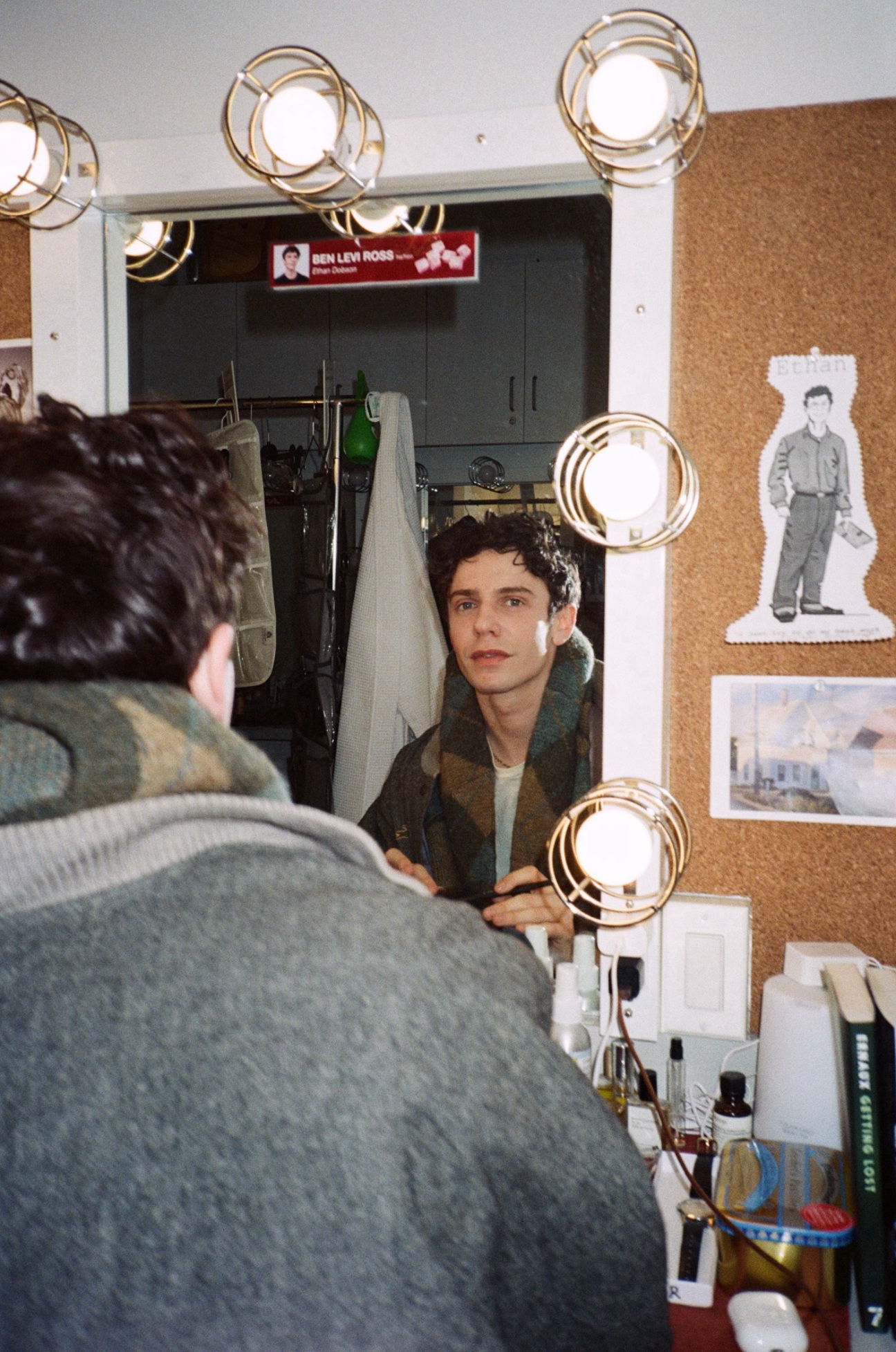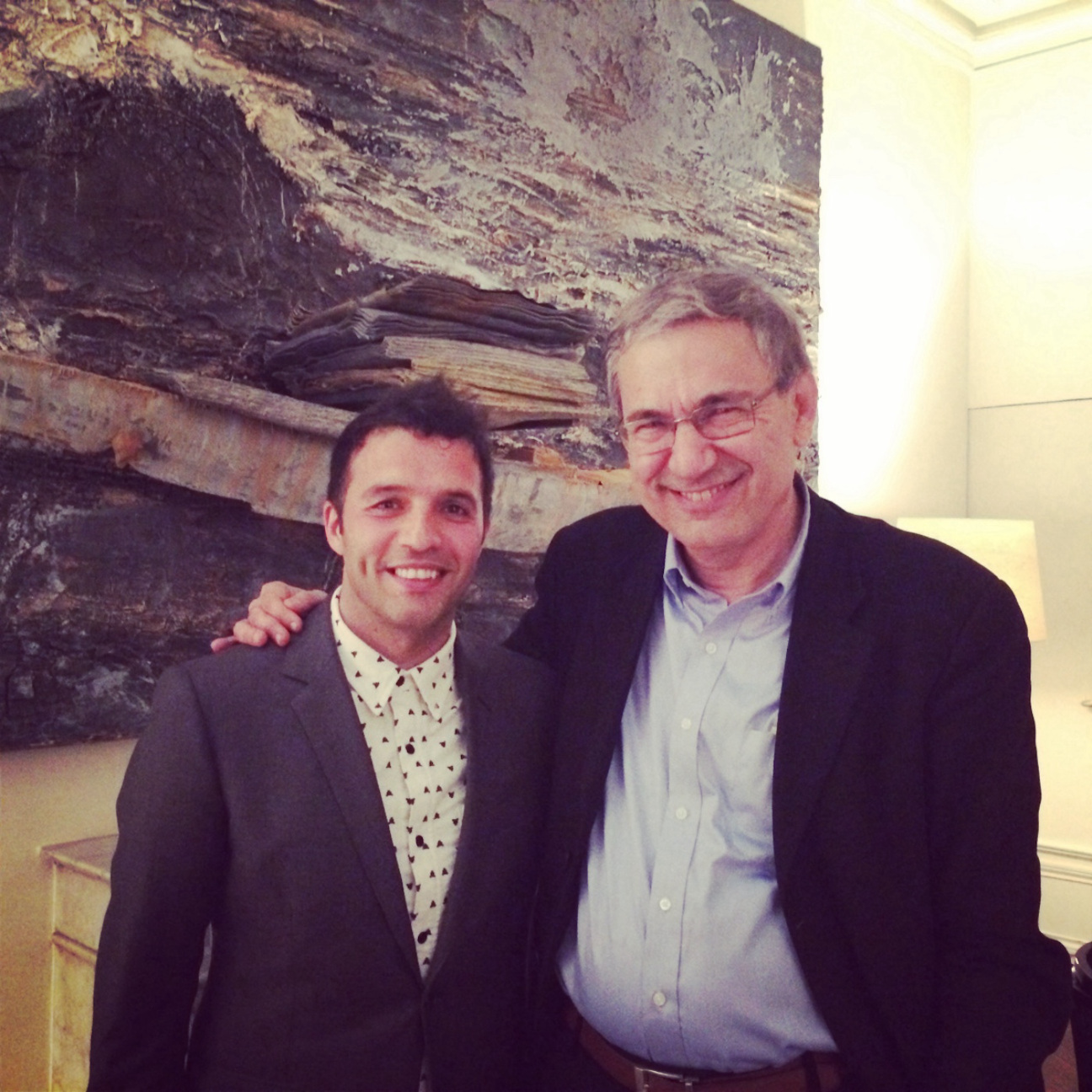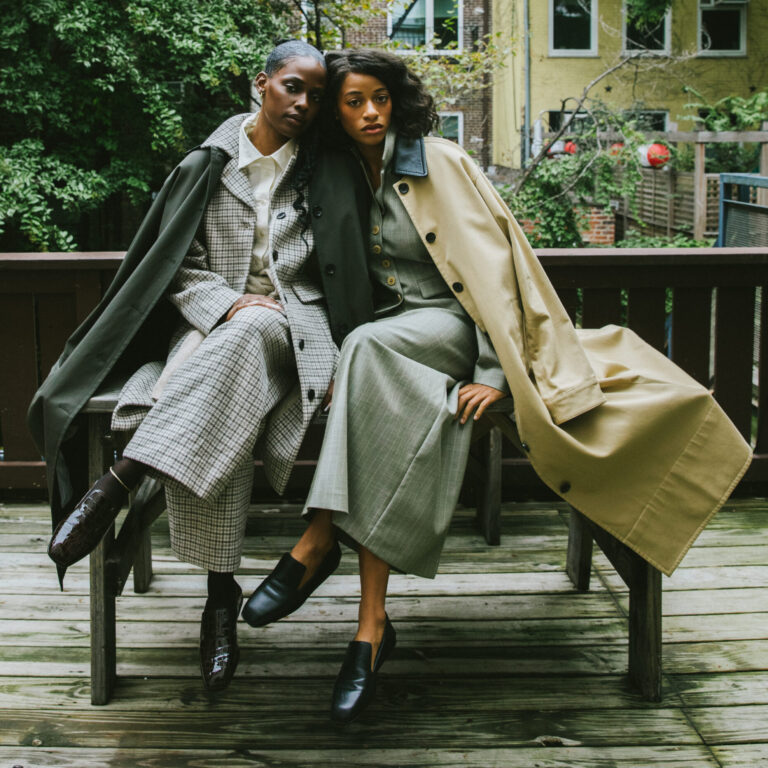Musicians, painters, actors, and creators from diverse backgrounds spoke to CULTURED this year about the common threads that weave throughout their work and lives. From painter Amy Sherald and musician Jon Batiste exploring the power of the inner child to singer-songwriter Rhiannon Giddens and incarcerated artist Spel finding a shared sense of storytelling across music and visual art, these dialogues explore the universal language of creative expression.
Here are some of the most illuminating excerpts.

Artist Njideka Akunyili Crosby and Filmmaker Malcolm Washington
Washington: It’s a big part of my identity—my blood is of that red dirt in North Carolina. That’s something I’ve tried to bring to all my work, even in The Piano Lesson. You know when you close your eyes what your grandmother’s house smells like.
Akunyili Crosby: Every once in a while when I’m making work, I find myself thinking, Why do I always obsess about what’s on the table, or what type of table it is, or what’s on the floor? I read this book on contemporary African literature. The author, Brenda Cooper, had this beautiful line about how many African writers will spend a lot of time describing the things in a kitchen, or the objects on a shelf. History is rooted in the specificity of those little, tiny objects. They really carry the portrait of a place.

Artist Amy Sherald and Musician Jon Batiste
Batiste: It’s that inner child, the pure thing we have within us. That’s the creative instinct. If I can find a way to get back to that, I know that I’m okay…Do you have a place like that?
Sherald: I want to say it’s my studio, but it changes as your career changes. I’m producing a lot more work now, so that feels different. These days, it’s more what I find in nature, and then I carry that feeling back to the studio. When I’m painting, my tentacles are so extended that I can feel too much, and that distracts me from working.

Tennis Legend and Entrepreneur Venus Williams and Artist Titus Kaphar
Williams: I didn’t go to many museums. I always called myself the worst tourist. We had this joke, too: If you became a tennis tourist, that was the worst thing that could happen, because it meant you had lost.
Kaphar: Sometimes the big museums are just so big it feels really overwhelming. You can go to a smaller museum, and it’s just a few people in that space. That’s one of the things that I love about the Yale University Art Gallery. You can disappear in front of a painting or a photograph for as long as you want.

Musician Rhiannon Giddens and Artist Spel
Giddens: It meant a lot for me to work with you to expose people to the idea of how difficult it is to create art from inside [prison], how imperative it is to create art, and how we could connect from visual art to music together, telling the same story. Different circumstances, but same intention. I'm just really grateful.
Spel: Wherever you put me, I will produce. When I was incarcerated at Graterford, if you came to my cell, it was like a studio. That’s why I’ve amassed a collection of over 200 artworks over my 34-plus years in here.

Actor Rachel Sennott and Pop Star Charli XCX
Sennott: I had this persona on Twitter when I was in my early 20s that was very real, but then I got to this place where I was sort of like, I don’t know if that’s fully me anymore. I stopped doing stand-up, I deleted my Twitter, I felt like I cut the cord between me and everyone.
Charli XCX: I’m beginning to be at peace with the fact that some people are going to perceive me as only one thing. Sometimes, I also want to call every single person on Twitter. But it’s just like, you can’t.

Performance Art Legend Marina Abramović and Actor Willem Dafoe
Abramović: My question for you is the same one I have for myself: When do we stop? Why are we so hungry? I’m 77, my dear, much older than you…I can’t imagine a time when I’ll stop working. How about you?
Dafoe: I can’t imagine it either. Of course, what we do is not regular work. Mine is integrated deeply into my life now, and I’ve always worked with my partners, with family, and friends. I don’t have the kinds of divisions that others might, so I can’t imagine that part of my life dropping away… I still love so many things, so I don’t know why I would stop working, because that’s the way I get to enact some of that love.

Comedian John Early and Actor Lux Pascal
Pascal: I don't want to shit on [Julliard] too hard, because it's not fair. But for me, it was pretty fucking terrifying being there. I don't regret it, but I would not do that again. Ever.
Early: Well, acting schools, even the best ones, are like cults. All acting schools are emotionally shady places. You're doing very vulnerable, weird stuff with unlicensed therapists, basically.

Television Personality and Media Mogul Martha Stewart and Interior Designer Colin King
King: What is your biggest contribution to culture?
Stewart: I have taught people to look at their homes not only as a shelter but as a place to enjoy. What we have created in terms of information and inspiration has been valuable to a very wide audience. For that, I’m really grateful.

Rapper Travis Scott and Artist George Condo
Scott: I just go at it. I’ve got ideas in my head that I want to get out. I’m trying to push things forward, always challenge myself to be better. I’ve always been a fan of things—now, I have fans myself who I consider family.
Condo: Every day I wake up and feel like I’m starting from a blank canvas all over again. It doesn’t matter what I’ve done over the last 30, 40 years, all the people I’ve met, all the music I’ve listened to. When I get into my studio, the one thing I ask myself is, What have I never done before? I love the idea that music and art are so interrelated—we thrive on one another.

Actor Annie Hamilton and Actor and Musician Ben Ross
Hamilton: What’s Nick [Carraway, narrator of The Great Gatsby] like? I haven’t brushed up on Gatsby in years.
Ross: Nick is a character that’s been interpreted in a few different ways over the years. Something that really excited me about our production is that, from the beginning, the creative team wanted to portray Nick as a gay man who is at a turning point in his life—leaving the war, leaving his 20s, searching for purpose, safety, love, and excitement. I’m just at the tip of my exploration now, and it’s already been really thrilling.

Artist and Designer Victor Barragán and Creative Director and Designer Betsy Johnson
Barragán: I started in fashion and people told me, “You are an artist using clothes. Just keep it like that. If you put it in a box, you are always gonna be overwhelmed, controlled.” I definitely see you as an artist first, and I feel like there’s a crazy thin line where, if you are in the fashion world, your work could have less meaning because it’s a product. Art is a product too, but it’s just different in the way it’s perceived.
Johnson: These terms—“jack of all trades, master of none”—have been planted there to make people like us, aka provocateurs, feel as if you have to be one thing. You’re less dangerous if you’re one thing. Your ideas can’t spread as vividly if you are stuck in one craft.

Novelist Orhan Pamuk and Artist Ali Banisadr
Banisadr: You talk a lot about dreams. There's this quote I really like that you talk about: “Dreams are not ekphrastic. Dreams cannot be described, only felt. The only way to transport the mood of a dream onto paper is to paint it in watercolor.” Do you write your dreams?
Pamuk: No. Once a year, once every 15 months, I have a strange, scary, moving dream, and right after it, I remember it for 10 minutes. If I write it [down] in those 10 minutes, I remember it. But if I don't write it, I forget it forever. It was the novelist Henry James who said, “Tell a dream in a novel and lose a reader.” [Laughs.]

Artist Joan Jonas and Musician Jason Moran
Jonas: I think we’ll rehearse a few times in MoMA’s theater space, because that’s where we’re going to be doing our performance.
Moran: One thing we do when we rehearse one of our duets is we play at 50 percent of the level we want to achieve. You have to save the rest for the actual performance, so you play just enough in a rehearsal to know, “Okay, this is going to be really great.” But you hold off until the audience is there. Something happens once an audience enters the room.










 in your life?
in your life?

